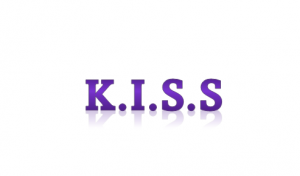
Is your “Confirmation Bias” Backing you into a Corner?
Confirmation Bias is a common phenomenon where humans view large quantities of evidence and choose to give greater weight (or even all the weight) to those items that support their theories. Think of it as a recipe for disaster:
Confirmation bias + Excess focus on the areas we know best (regardless of their importance) = Epic Failures a.k.a. Projects that consume a ton of energy and yield little in the way of results.
In her recent book, “The Upside of Down” Megan McArdle gives two great examples of “confirmation bias”, one dealing with the “Truthers” who claim the 9/11 bombings were a secret government project and the other example an examination of how different groups view the reasons for the recent financial crisis, each “team” selecting the evidence that support their theory and rejecting other bits of evidence.
Lately it has become easier and easier for all of us to ignore or reject information that runs contrary to our internal views. Depending on your politics you can select a news channel that will then present the news in a slant that will endlessly confirm your world view. Any dissenting opinions will be cut off, minimized or mocked. The speed at which an internet based news society disseminates information also allows for a minimum of in-depth journalism, much less fact checking.
Unfortunately we do that inside of the business world as well. Labels such as “negative,” “nit-picky” or “impractical” can be accurate, but they can also be used to ignore dissent, or worse yet, critical red flags. As a business leader, if you’re committed to doing great things, you need to be open to listening to your critics. There may be a nugget of gold in there.
Years ago I worked at a dot com. After working there for several months, I was told we’d be launching free websites for real estate agents, then charging for them at some distant later point. Having come from an accounting background I asked some questions about the timing of the future revenues vs. the cost of extending the free sites for an indefinite time. I remember being told very clearly (and somewhat condescendingly,) that I “didn’t understand the model.” I went home that evening, questioning myself, my brain, even my ability to function in a changing world. I ran the numbers, researched other similar models, and calculated the rough costs of the tens of thousands of dollars I knew that the company was spending each day. (Our “burn rate” was to the tune of about 500K per week). I decided I was simply “not getting it” clearly a dinosaur unprepared for the new world of the internet based business model. I was 33 years old and a dinosaur.
I was wrong. I understood the model. The company, however, did not. They shut down 8 months later, having been unable to convert the “business model” into a sustainable business fast enough. The investors were unwilling to provide any more funds as well. They apparently didn’t understand the “business model” either.
As you create your plan, your vision, listen to the dissenters. Ask questions, probe for why. Punch holes in your own plan. Play devil’s advocate and picture a model that operates on entirely different assumptions than the model you chose. Why is your model more valid? Where are your confirmation biases? When you’ve uncovered them, and examined the dissenting evidence and factored it into the model, that’s when you’re ready to begin!
Need some more ideas on how to make sure your project is ready to go? Start here.
Worried about your blind spots? Read this.
Afraid you aren’t seeing the bubble you live in? Try this.

A great way to see all the moving parts in an organization is to review the lists of questions found in our free field guide. It’s free, simply sign up for our weekly newsletter (and no we won’t spam you or drive you nuts with crazy emails. We sent our a digest one time a week of relevant articles. That’s it.) There’s a box either at the right or just below this for you to sign up. And you’ll get your free guide right away.



